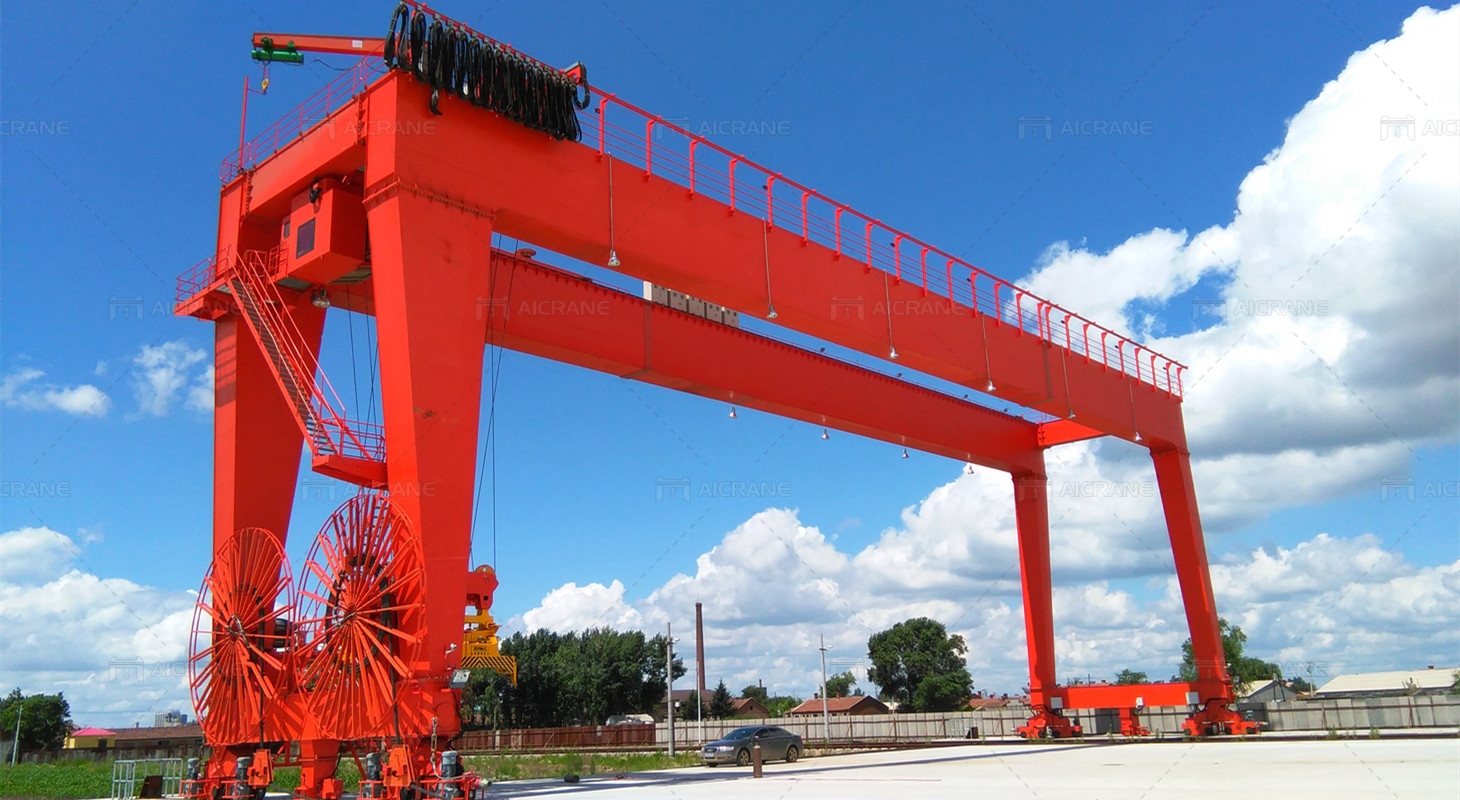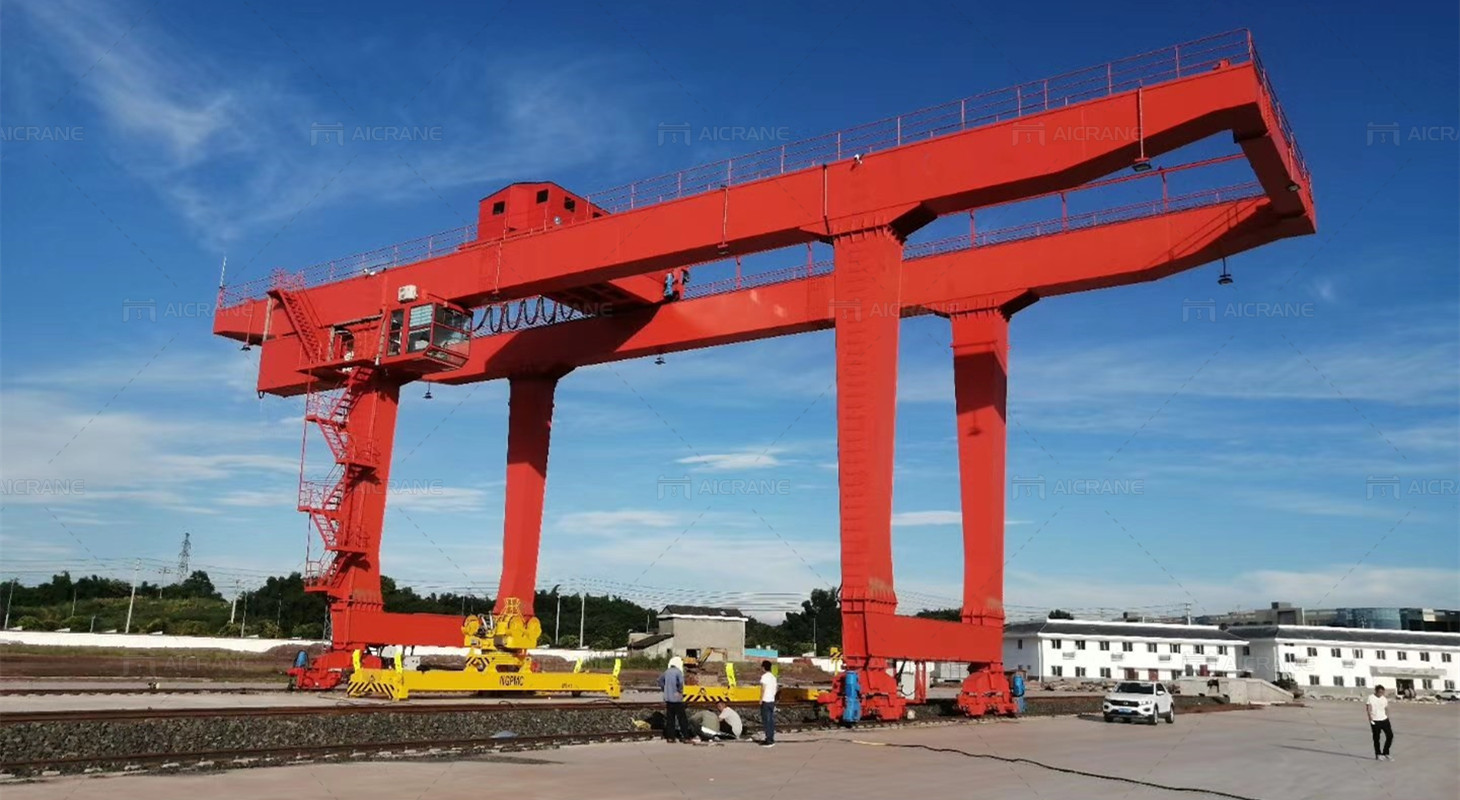The installation of a container gantry is a complex and crucial process in the construction of a port or terminal. Container gantries, also known as ship-to-shore cranes, are massive structures that facilitate the loading and unloading of containers from ships. They play a vital role in the efficient and safe movement of cargo in maritime operations. In this passage, we will explore the step-by-step process involved in the installation of a container gantry, highlighting key considerations and techniques.

Site Preparation
Before commencing the installation, thorough site preparation is essential. This includes clearing the area of any obstructions or debris, leveling the ground to ensure stability, and verifying the site’s suitability for the crane’s foundation. The site should be surveyed to determine the necessary dimensions and ground conditions required for the installation.
Foundation Construction
The first major step in installing a container gantry is constructing the foundation. The foundation serves as the base for supporting the entire structure, including the crane’s columns and rails. The specific design and construction method can vary depending on factors such as soil conditions, expected loads, and local regulations. Common foundation types include pile foundations, caissons, or reinforced concrete slabs.
Column Erection
Once the foundation is complete and has cured sufficiently, the next step is erecting the crane’s columns. These columns are typically large steel structures that provide vertical support for the gantry. Specialized equipment, such as cranes or hydraulic jacks, is used to lift and position the columns into place accurately. Precision and alignment are critical during this stage to ensure the structural integrity of the gantry.
Rail Installation
After the columns are erected, the installation of the rail system follows. The rail system consists of tracks along which the gantry cranes will move horizontally. These tracks are usually constructed using heavy-duty steel rails embedded into the ground or attached to concrete beams. The rails must be precisely aligned and leveled to ensure smooth and stable movement of the gantry cranes.

Girder Assembly
The girder assembly is a crucial component of the container gantry. It consists of long horizontal beams that span between the columns and provide support for trolleys and hoisting mechanisms. The girders are typically fabricated off-site and transported to the installation site. Specialized equipment, such as mobile cranes or hydraulic gantries, is used to lift and position the girders onto the columns. Welding or bolting techniques are then employed to secure the girders in place.
Trolley and Hoist Installation
Once the girder assembly is complete, the next step is the installation of the trolleys and hoisting mechanisms. These components enable the movement and lifting of containers. Each trolley is equipped with wheels that run along the girders, allowing it to traverse horizontally. Hoists, which are situated on the trolleys, provide the lifting power to handle containers. The trolleys and hoists are carefully positioned and securely attached to the girder assembly. The container gantry is usually double girder gantry crane.
Electrical and Control System Integration
The container gantry requires an extensive electrical and control system to operate efficiently. This includes power supply connections, motor controls, limit switches, sensors, and communication systems. Highly skilled electricians and technicians work on integrating these components, ensuring proper wiring, grounding, and safety precautions are followed. Testing and commissioning procedures are carried out to verify the functionality and synchronization of the electrical and control systems.
Safety Measures and Final Inspections
Throughout the installation process, strict adherence to safety measures is paramount. Safety barriers, signage, and access control systems should be implemented to protect workers and prevent unauthorized entry. Regular safety inspections are performed to identify and address any potential hazards or non-compliance issues. Once the installation is complete, final inspections are conducted to verify that the gantry system meets all safety and operational requirements.
Training and Handover
Before the container gantry becomes operational, comprehensive training programs should be provided to operators and maintenance personnel. This ensures they have a thorough understanding of the gantry’s operation, safety protocols, routine maintenance procedures, and emergency response measures. Once the training is complete, the gantry is handed over to the responsible authority or operator, marking the completion of the installation process.
In summary, the installation of a container gantry is a complex undertaking that requires meticulous planning, skilled labor, and adherence to safety regulations. The step-by-step process involves site preparation, foundation construction, column erection, rail installation, girder assembly, trolley and hoist installation, electrical and control system integration, safety measures, final inspections, training, and handover. By following these procedures diligently, a fully functional and safe container gantry can be successfully installed, ensuring efficient container handling operations in ports and terminals.